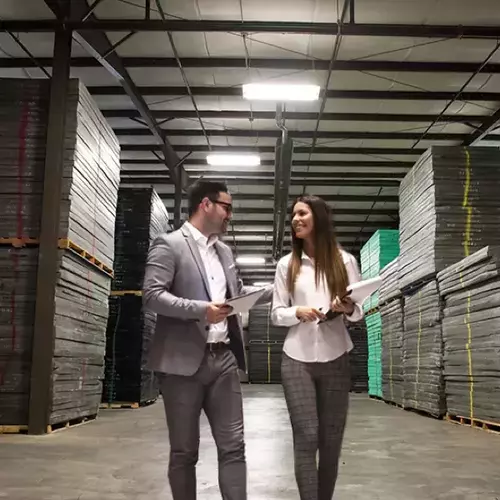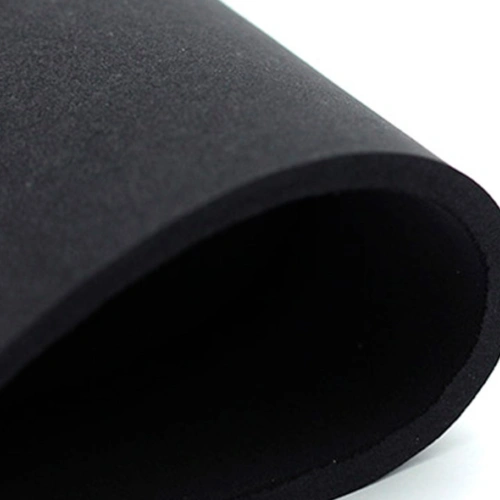| November 27, 2025
Have you ever wondered why the price of polyethylene foam can vary so much between one supplier and another? Although at first glance they may seem like similar products, there are multiple factors that determine their final cost.
From the quality of the materials to the type of application or the volume of purchase, every detail can influence the value and performance of the product.
In this article, we explain which aspects determine the price of polyethylene foam, how they affect the performance of your packaging, and what you should consider to obtain the best cost-benefit ratio.
What is polyethylene foam and why does its price vary?
Polyethylene foam is a closed-cell material widely used in packaging, insulation, and protection of industrial products. Its popularity is due to its lightness, impact resistance, impermeability, and durability.
However, the price of polyethylene foam can fluctuate depending on factors such as the type of polyethylene (cross-linked or non-cross-linked), its density, manufacturing processes, and customer specifications.
What are the key factors that influence the price of polyethylene foam?
Understanding these variables will help you make smarter decisions when acquiring this material for your projects or production lines. Learn about the key factors in the following paragraphs.
Type and density of the material
The first factor that directly influences the price of polyethylene foam is its type and density. There are two main categories:
Non-cross-linked polyethylene foam (PE): more economical, ideal for general uses such as shipping protection or filling.
Cross-linked polyethylene foam (XLPE): more expensive, but with superior properties in resistance, flexibility, and durability.
The density of the material also impacts the cost. A higher density foam offers better impact absorption and greater durability, but its production requires more raw materials and more complex processes.
Production processes and applied technology
Manufacturing technology is another key element in material costs. Foams produced with advanced processes, such as the use of pure gas or controlled chemical cross-linking, ensure a more uniform cellular structure and superior results.
In contrast, more basic processes can produce foams with irregularities or lower purity, which affects their performance and the quality of the packaging.
Therefore, although an economical foam may seem attractive, its durability or protection capability might not be ideal for industrial applications or high-value uses.
Requested quantity and customization
The volume of purchase has a direct impact on the price of polyethylene foam. Large-scale orders usually offer more competitive prices thanks to production and logistics optimization. As with polyethylene foam rolls.
Thanks to bulk purchasing, it is usually cheaper. On the other hand, customized products, such as foams cut to size, die-cut, or specific colors, can raise the cost due to additional work on machinery or molds.
The key is to balance your needs: acquire the right volume to reduce costs, without compromising the precision or design of safe packaging.
Logistical factors and provider location
Logistical efficiency also influences the final cost. Transporting polyethylene foam can be costly due to its volume, even if it is lightweight. Therefore, choosing a nearby supplier or one with local distribution centers can help you reduce shipping times and costs.
Companies with regional presence, like Worldwide Foam, optimize the supply chain to offer high-quality products without logistical overcosts, ensuring fast and reliable delivery.
Certifications and regulatory compliance
Foams used in specialized sectors (such as the automotive, medical, or food industry) must meet specific certifications that guarantee their safety and performance.
Complying with standards and certifications involves more controlled manufacturing processes and additional tests, which can increase the price of polyethylene foam. However, this additional cost translates into greater confidence, durability, and safety for the end user.
Market conditions and availability of raw materials
Finally, material costs can fluctuate due to external factors such as oil prices, the availability of virgin polyethylene, or global economic conditions. During periods of high demand or raw material shortages, prices may temporarily increase.
Working with a reliable distributor that manages constant inventories can help you avoid these abrupt variations.
Why choose Worldwide Foam for your polyethylene foam?
At Worldwide Foam we understand that the price of polyethylene foam should not only be measured in terms of cost per unit, but also by the total value it adds to your operations. Our foams are manufactured under the highest quality standards, with purity control and uniform cellular structure, ensuring optimal performance in each application.
Additionally, we offer solutions tailored to the needs of industrial foam, from high-quality packaging to specialized foams for insulation and protection. Investing in a quality foam means reducing waste, minimizing transportation damage, and ensuring better logistical efficiency in the long run.
The price of polyethylene foam depends on multiple factors, but understanding them will allow you to optimize your resources and obtain materials that truly add value to your business. If you are looking for a balance between cost, performance, and durability, choosing a specialized supplier like Worldwide Foam is the best decision for your company.
Do you need high-quality polyethylene foam at a competitive price? Contact us at Worldwide Foam and discover our industrial solutions designed to optimize your processes and reduce costs.
Frequently Asked Questions
1. What is the average price of polyethylene foam?
It depends on its density, type (cross-linked or not), and volume of purchase. High-quality industrial options may cost more, but they offer a longer lifespan.
2. Does customization affect the price?
Yes. Special cuts, colors, or custom treatments increase the price due to additional work and use of specific machinery.
3. What is the difference between polyethylene foam and industrial foam?
Industrial foam encompasses materials specialized for technical applications, while polyethylene foam focuses more on protection, insulation, and packaging.
4. How does the quality of the packaging influence the total cost?
Good packaging quality reduces losses, protects products, and avoids additional expenses from returns or damages. In the long run, it is a profitable investment.
5. Can I reduce the price by optimizing logistical efficiency?
Yes. Buying locally, planning deliveries, and choosing suppliers with nearby distribution centers can reduce transportation and storage costs.
6. Does Worldwide Foam offer quality polyethylene foam?
Yes. At Worldwide Foam, we develop safe packaging and polyethylene foam solutions tailored to the needs of each industry.
Worldwide Foam

We are leaders in the supply of closed cell polyethylene foam in Mexico. We support various industries by offering a wide range of products and complementary services.











